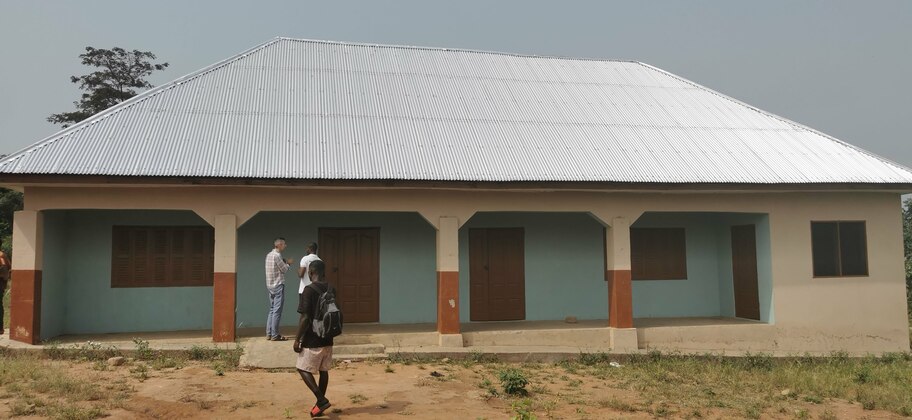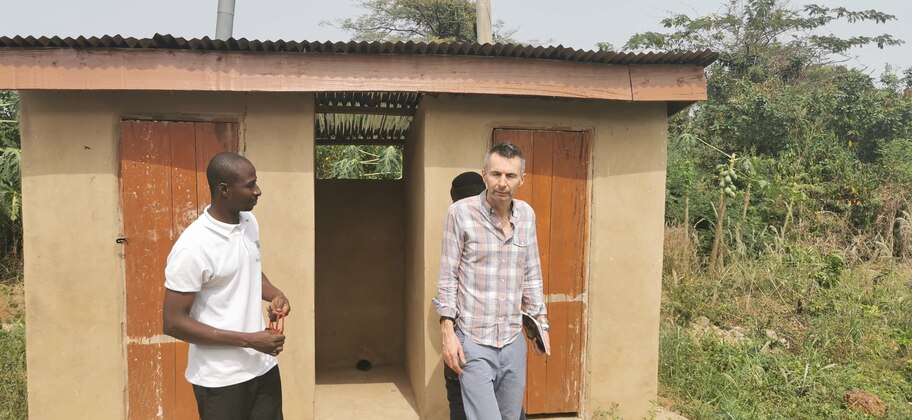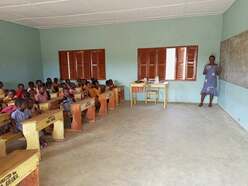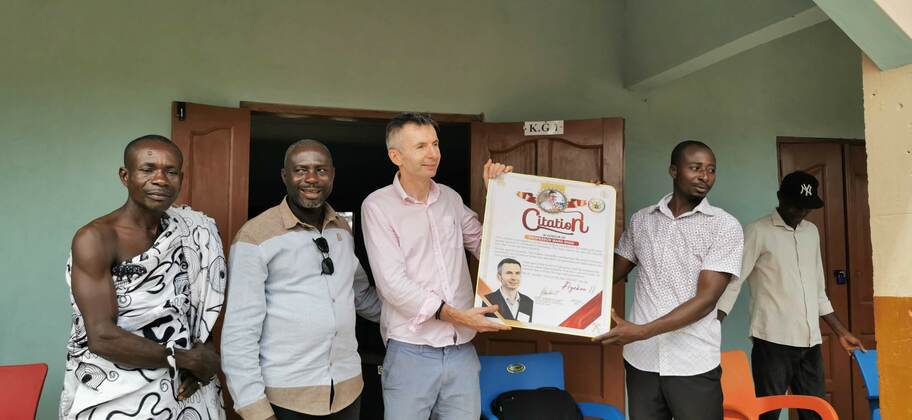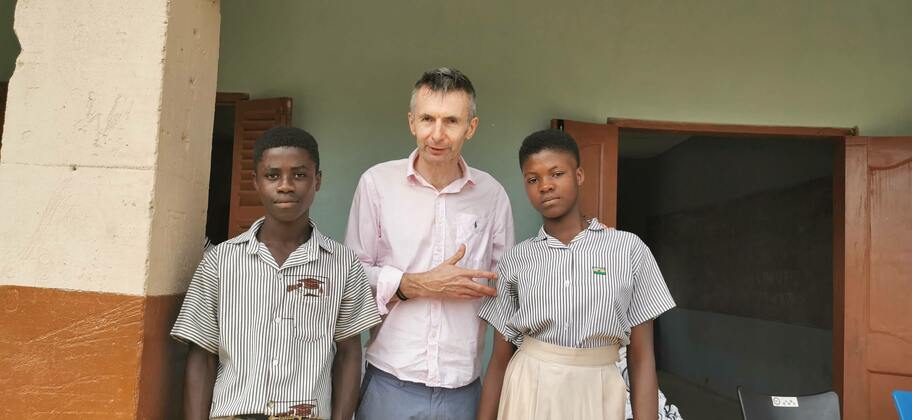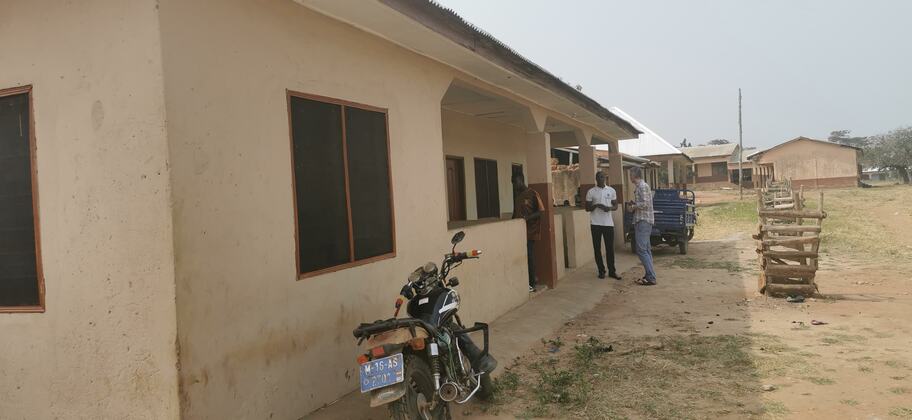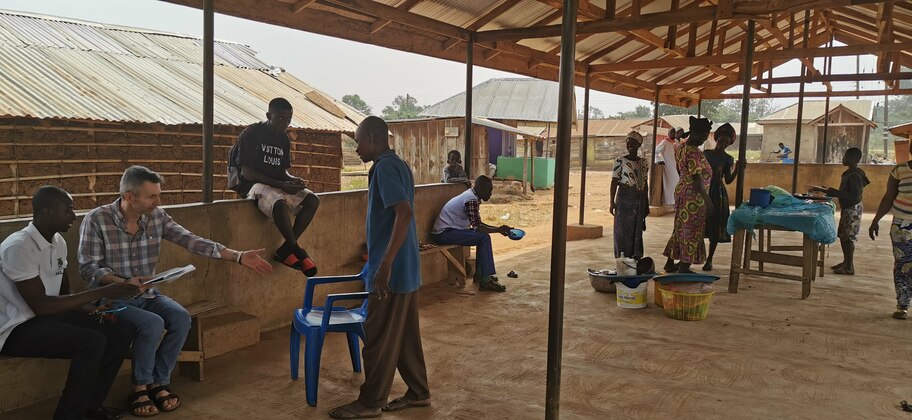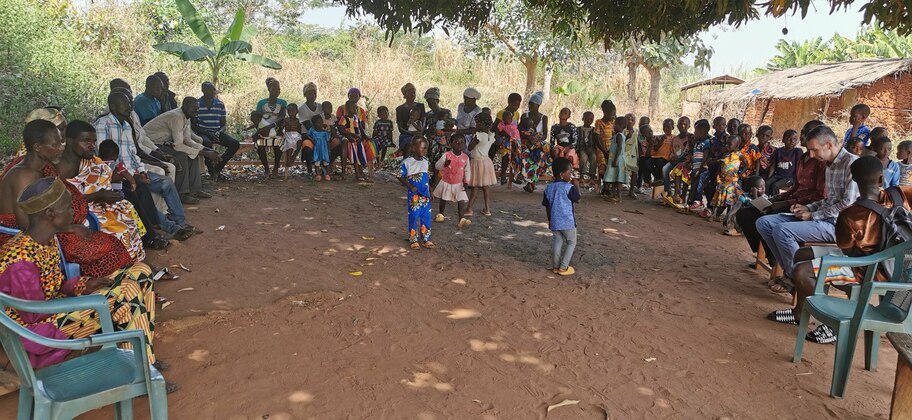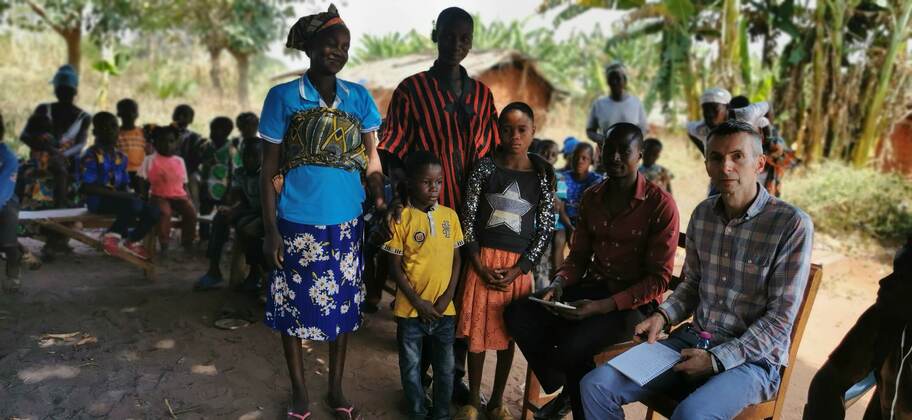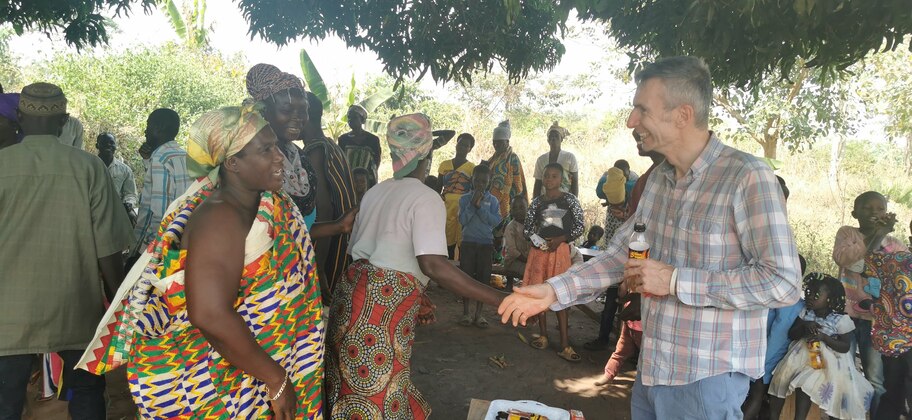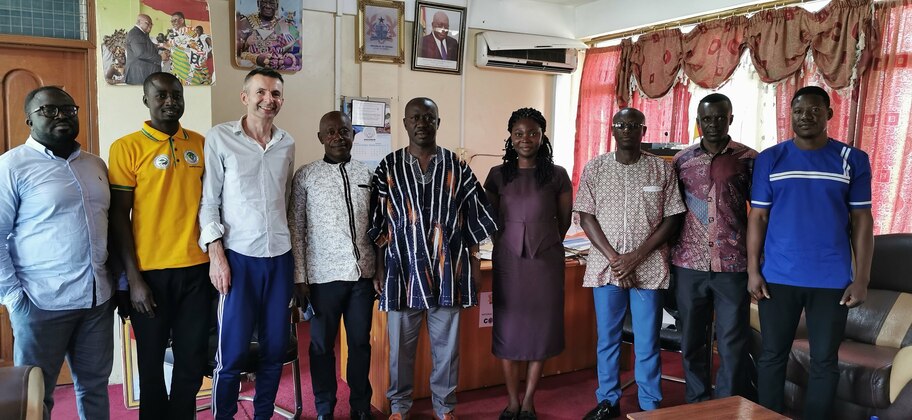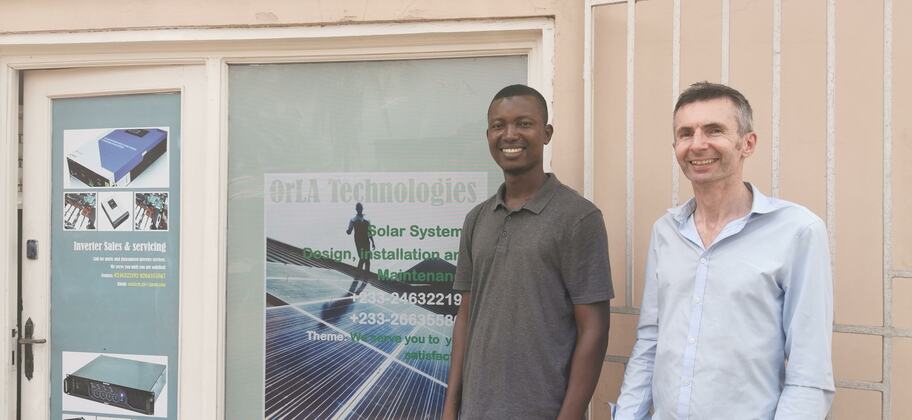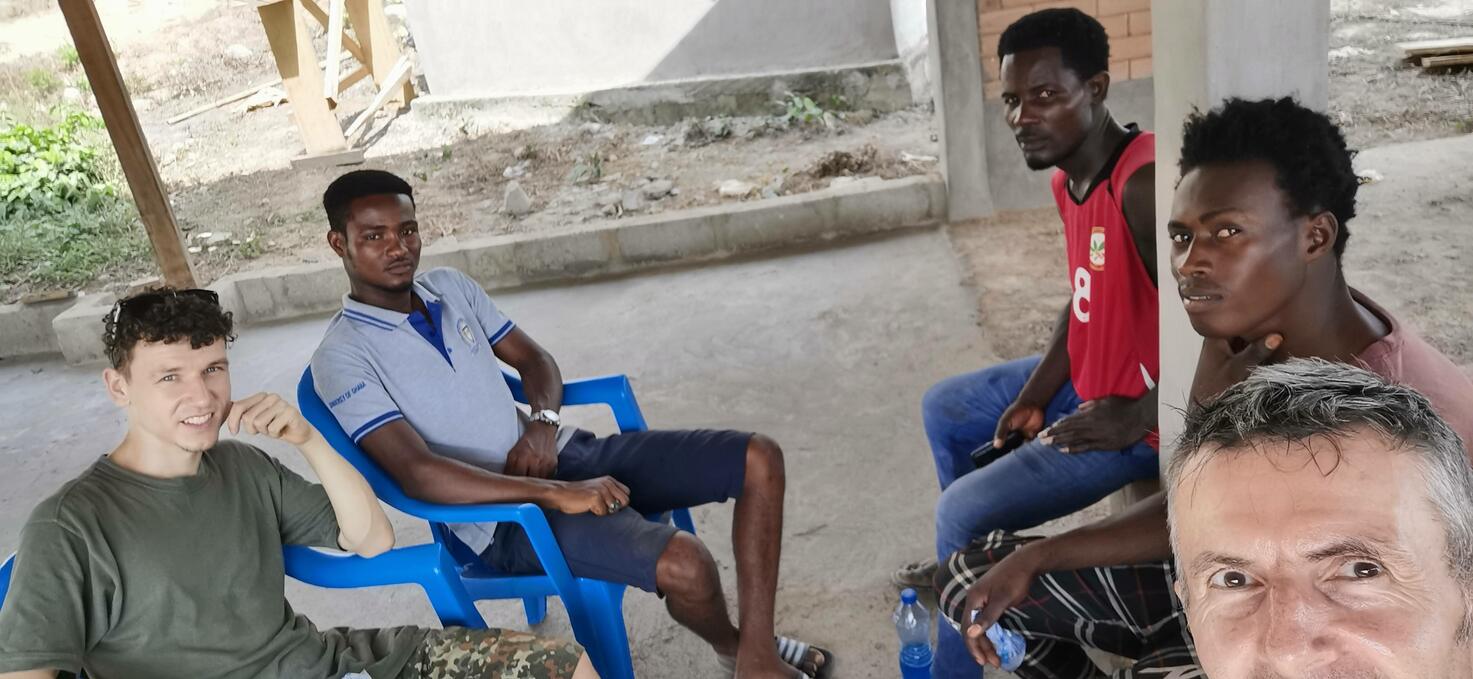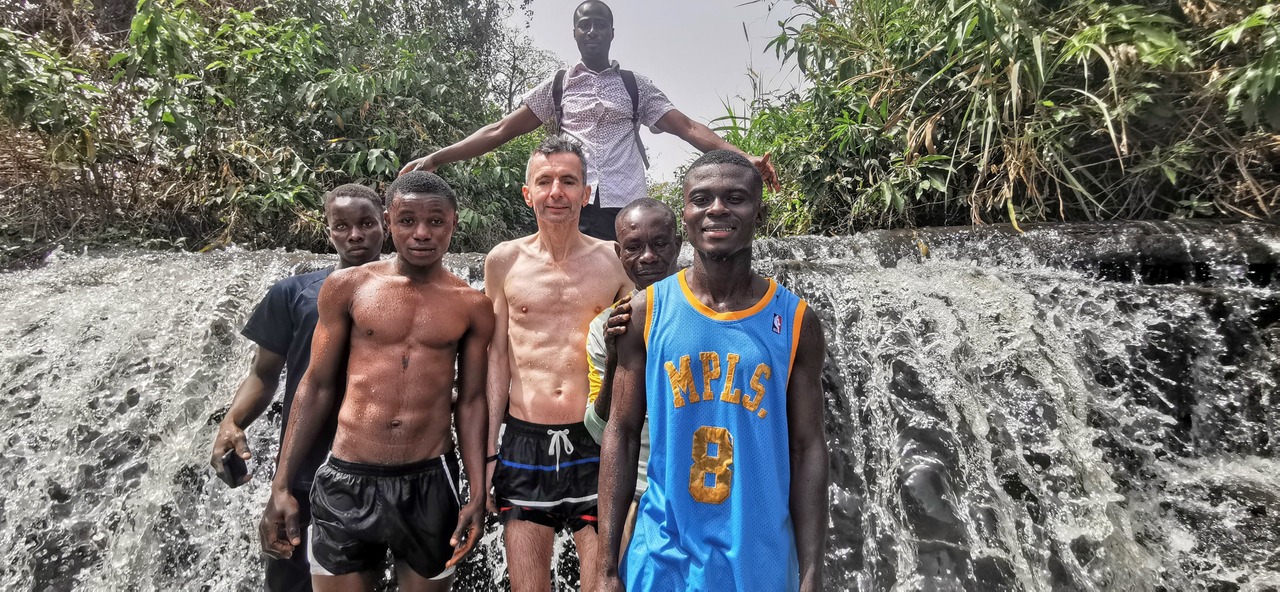Visit in January 2023
March 15, 2023
1. Visiting our new Kindergarten school in Aframano
Click on images for full size.
It’s been wonderful to see the school in real life; although we had seen pictures and knew exactly what size it was, it was really nice to feel the size of the rooms and the building. We are very happy that it was built on-time and within budget, and lessons commenced last August (2022). The first picture shows the school building, with its two large class rooms and two smaller office rooms. The second one shows the small latrine block about 30m away. The third picture is a class in progress.2. Speeches and student support
Mark represented all the donors of Turbo Ghana in accepting the “citation”. As we know from the school opening ceremony, there really is a lot of excitement and enthusiasm about this new building in Aframano. In Ghana, students going to senior school (where they are boarders) are required to equip themselves with all the items in the “prospectus”, which is a list of necessities, including a mattress, two or three sets of clothes, some cooking equipment, and other things. The cost is about £100, and is a real struggle for many families. In some cases, children simply don’t go to senior school because they can’t afford the prospectus. This was the likely situation for Joshua in 2021, but Turbo Ghana was very happy to pay for his prospectus when we heard he was academically the highest-achieving student of his junior school.This year, we wanted to find a new recipient for the prospectus scholarship, so Mark set a series of live questions which everyone could attempt to answer in a knock-out competition. After five rounds there were just two students left (second picture), so we decided to support them both. Going forward, Turbo Ghana will support two students from Aframano each year with their prospectus, and at least one of them will be a girl because girls are often disadvantaged regarding schooling. The head teacher Mr Seth (on my right in the first picture) will inform us of the top 10 candidates, and then during our annual visit we will have another live knock-out competition to find the best two. If our donors like this idea, we can expand the scheme.
3. Teacher accommodation
As well as building the school, we were able to refurbish two buildings for use as teacher accommodation. This is essential in remote villages like Aframano, because teachers can’t practically commute daily from home. The new rooms are great. There are six, and can accommodate up to 14 teachers at full capacity. Like the school, these buildings have been handed over to the department of education for them to run and manage them.4. Our past projects
We visited our past projects, including my favourite (the manual borehole). They are all in working order. The covered marketplace (pictured) is a wonderful central spot for having meetings in the shade from the sun, when it’s not being used for the market on market day.5. Kontonho
Kontonho is a satellite community of Aframano, with about 170 people, about two hours walk from that village. Ordinary cars can’t drive there, because it’s a “hand-made” road with a very uneven surface and lots of obstacles; you either go on a motorbike, or on a high-axle vehicle with big wheels, like a delivery truck. Kwasi Alare first took us there in 2022, and we went again in 2023. When we arrived, the community had assembled under a tree in a big circle. It was my second time to hear Kontonho’s needs.Their first need is a school for young children, specifically Kintergarten and the lower primary years. At the moment, these children have to walk to Aframano, a two hour journey, or to Kofiase, which is even further at 3-4 hours each way. Mark talked to Asoma, age 7, who is in Primary 2 in Aframano. He does the two-hour walk there and back every day. We also talked to Nana Afia, age 10 in Primary 4 in Kofiase. She does that 3-4 hour walk twice a day. If we can raise funds to build a school in Kontonho, this will be a huge contribution to their education. The pre-school in Kotonho is projected to allow access to education for 70 pupils.
Kontonho’s second need is water. Their current situation is that there are two rivers, both of them 30 minutes walk away. But Kontonho is surrounded by small settlements, and some of those are one hour away from water. If we build a borehole in Kontonho, about 300 adults and 400 children will be able to access fresh water.
6. Electricity in Aframano?
Ever since we first visited in 2017, Aframano has been promised mains electricity. The high-voltage pilons are there, but not connected, and the transformers and drop-cables to houses are not installed yet. That’s been the situation for the last 5 years. Kwasi asked Mark to join him at a meeting in Mampong, where we would be able to talk about it with the “municipal chief executive” (centre). The meeting turned out to be bigger than we thought, with six other officials present too. During the meeting, we were able to talk to the Director of Power in Accra. We made the case for Aframano. So now we are hopeful something will happen. I’m constantly struck by the opportunities for solar energy in Ghana, but it seems very difficult to make this work in practice. We would love to solarise our mechanised borehole, especially if mains electricity will take more years. Currently the borehole runs on diesel, but actually it doesn’t run because diesel is unaffordable.Whenever we ask about solar power, we’re told that there is no local expertise and companies in Accra won’t find it economic to come to Aframano. (This isn’t entirely true. We did find a very nice company that has given us a quote. But it’s true that many companies think a project like ours is too small.) At the same time, there are no careers for young people. So we’d like to sponsor a young person (or more) to get an apprenticeship in a solar installation company in Accra and bring that expertise back to Ashanti. The company that gave us the quote would be an excellent host, and we think sponsoring an apprenticeship in that company would be a great idea.
